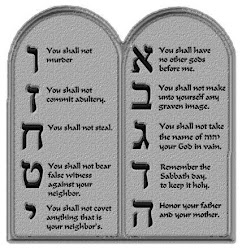CANADA THE LAST BORDER
o Area: 9.970.610 Sq Km.
o Population: 28.386.000 inhabitants
o Languaje: English and French
o Capital: Ottawa
o Other major cities: Montréal, Toronto, Calgary, Vancouver Québec,
Edmonton and Winnipeg.
o Form of government: Federal Parlamentary Stab
o Religion: RC. United Church of Canada and Anglicanism.
o Currency or Monetary Unit: Canadian dollar.
o Highest Point: Mount Logan in the Yukon
Canada is the second largest country in the world and the largest in North America. It is a land of great climatic and geographical extremes. It lies to the north of the USA and has Pacific, Atlantic and Arctic coasts. Canada is rich in forest reserves which cover more than half the total land area.
Canada is a Commonwealth’s member.. The country is constituted by 10 provinces, each one has its own parlament and government.
Montreal is the main French-speaker city in the world after Paris. It is located in the confluence of the rivers San Lorenzo and Ottawa. Montreal has become in a great port. In fact, it is the capital of Canadian finances.
Toronto’s skyscrapers show the dynamism of this city. It was built over a rectangular plateau. Its streets conform a real chess board.
Calgary was a small town which had about 4000 inhabitants in 1900. Later, the construction of the Canadian Pacific Railway and the Oil exploitation in Turney Valley have become it in an outstanding industrial and commercial center that has 768.082 inhabitants.
Vancouver The skyscrapers of the commercial center of this beautiful city break monotony of low single-family houses which spread through the mountain, the sea and the United States’ border.
Québec is the Canadian city that more looks like Europe. It was founded in 1608 by Samuel de Champlain. In 1759 the British army occupied the city which began to be a part of the British Crown. Nowadays the most Canadians who speak French live there.
Edmonton is the capital of Alberta province. It is a commercial and industrial center. Due to it is situated at the Rocky Mountains’ skirts, at the border of North Saskatchewon is a crossroad to north and north-west lands.
Adapted by Ubaldo Gandica
o Area: 9.970.610 Sq Km.
o Population: 28.386.000 inhabitants
o Languaje: English and French
o Capital: Ottawa
o Other major cities: Montréal, Toronto, Calgary, Vancouver Québec,
Edmonton and Winnipeg.
o Form of government: Federal Parlamentary Stab
o Religion: RC. United Church of Canada and Anglicanism.
o Currency or Monetary Unit: Canadian dollar.
o Highest Point: Mount Logan in the Yukon
Canada is the second largest country in the world and the largest in North America. It is a land of great climatic and geographical extremes. It lies to the north of the USA and has Pacific, Atlantic and Arctic coasts. Canada is rich in forest reserves which cover more than half the total land area.
Canada is a Commonwealth’s member.. The country is constituted by 10 provinces, each one has its own parlament and government.
Montreal is the main French-speaker city in the world after Paris. It is located in the confluence of the rivers San Lorenzo and Ottawa. Montreal has become in a great port. In fact, it is the capital of Canadian finances.
Toronto’s skyscrapers show the dynamism of this city. It was built over a rectangular plateau. Its streets conform a real chess board.
Calgary was a small town which had about 4000 inhabitants in 1900. Later, the construction of the Canadian Pacific Railway and the Oil exploitation in Turney Valley have become it in an outstanding industrial and commercial center that has 768.082 inhabitants.
Vancouver The skyscrapers of the commercial center of this beautiful city break monotony of low single-family houses which spread through the mountain, the sea and the United States’ border.
Québec is the Canadian city that more looks like Europe. It was founded in 1608 by Samuel de Champlain. In 1759 the British army occupied the city which began to be a part of the British Crown. Nowadays the most Canadians who speak French live there.
Edmonton is the capital of Alberta province. It is a commercial and industrial center. Due to it is situated at the Rocky Mountains’ skirts, at the border of North Saskatchewon is a crossroad to north and north-west lands.
Adapted by Ubaldo Gandica


No comments:
Post a Comment